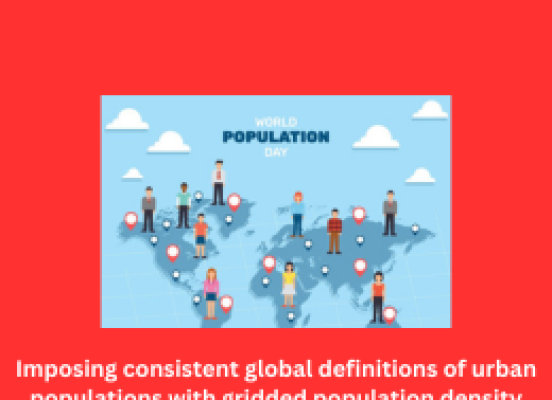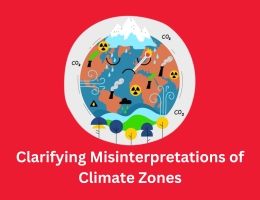
Imposing consistent global definitions of urban populations with gridded population density models
- By admin --
- Tuesday, 21 May, 2024
1. Introduction
According to the United Nations (2019), 54% of the world’s 7.4 billion population lived in urban areas during 2015. The landmark of global population transition to an urban majority occurred during 2007. Nevertheless, urban definitions vary across countries because no common global definition exists of urban populations (United Nations, 2019). Criteria may be based on administrative boundaries, minimum population agglomerations, population density, and economics, infrastructure and services, including paved roads, electricity, piped water, sewers, schools, and health services (Potts, 2017, United Nations, 2019, Wineman et al., 2020). Specifically, 59 out of 233 countries use administrative designations as the sole criterion to distinguish between urban and rural areas (United Nations, 2019).
Attempting to incorporate complex social, economic, political, and demographic histories and transformations that are multidimensional into measurement of urban populations compromises a shared definition of urban populations and successful cross-country comparisons. High human population densities and built environments are permanent urban characteristics that differentiate rural and wildlands characteristics of low human densities and associated buildings. Economics and employment are distinct from the permanent characteristics of population and housing densities that differentiate rural lands from built lands even though economic factors, particularly employment, may be included in a definition of urban (Potts, 2017, United Nations, 2019, Wineman et al., 2020). Employment in the agricultural sector is a dynamic component of employment specialization and industrialization trajectories to post-agrarian societies. This process is related to urban growth, because specialization in employment that is disconnected from natural resources permits urban concentration where non-agricultural economic activities occur (Satterthwaite, 2007, Potts, 2017, Wineman et al., 2020). However, many countries are on unique developmental trajectories and cycles that defy common urban definitions and comparisons.
2. Results
Preliminary thresholds for population density classes from exurban low to urban high density.
For preliminary thresholds based on five U.S. residential classes, I adjusted values determined by the classifier to match approximate areas of each residential class. Accuracy of the relationship between population densities and residential density classes for the United States was 0.68, but accuracy varied widely by class. I classed the following (2010 Landscan) population densities per square km: 0–1 as wildlands and 1–20 as inhabited (combined 89.5% of the contiguous United States), 20–100 as exurban low density (6.2% of the contiguous United States), 100–500 as exurban high density (2.4% of the contiguous United States), 500–1500 as suburban (1.3% of the contiguous United States), 1500–4500 as urban low density (0.6% of the contiguous United States), and > 4500 as urban high density (0.6% of the contiguous United States).
Compared to the United Nations global urban estimate of 53.93%, in interval classes of 100, Landscan had the least difference at 1900 humans per km2 (urban percentage of 54.18%), Worldpop had the least difference at 800 humans per km2 (urban percentage of 54.53%), GPW had the least difference between 600 (52.04%) and 500 humans per km2 (56.20%), and the ensemble Landscan and Worldpop model had the least difference between 1100 (52.98%) and 1000 humans per km2 (54.83%). However, when not globally-weighted, compared to the United Nations census estimates for 88 countries with populations ≥ 10 million, for Landscan, deviation by country was least (mean absolute error = 13.33) at 1400 humans per km2 and error increased (mean absolute error = 13.80) at the global threshold of 1900 humans per km2. For Worldpop, deviation by country was least (mean absolute error = 14.66) at 500 individuals per km2; error increased (mean absolute error = 15.29) at the global threshold of 800 humans per km2. For GPW, minimum error (mean absolute error = 19.99) occurred at 200 individuals per km2 and error increased (mean absolute error = 21.51) at the (near) global threshold of 500 humans per km2. For the ensemble Landscan and Worldpop, deviation was least (mean absolute error = 12.84) at 700 individuals per km2, but the ensemble Landscan and Worldpop model had the least error, resulting in relatively low error (mean absolute error = 13.64) at the global threshold of 1000 humans per km2.
3. Discussion
In order to provide a common understanding of urban populations across national borders, I created a temporary classification scheme for the use of modeled population densities to define urban populations. Different national definitions of urban populations are used by the UN. However, as previously found with the Africapolis settlement database, the population models varied by nation from reported census data by the United Nations after imposing consistent global definitions of urban populations with thresholds for gridded population densities (Moriconi-Ebrard et al., 2008, Heinrigs, 2020). Together, the three population models altered the status of thirty-two nations, or thirty percent of the world's population, and thirteen more countries, or 270 million people, had less urbanization than the U.N. report by more than twenty percentage points. The three demographic models indicate that more populated nations, While most European nations were either less urban than claimed, several countries, including Vietnam, Bangladesh, Pakistan, the Philippines, and India, were more urban than rural.
4. Conclusions
I used population densities by equating population density models with the United Nations worldwide urban population in 2015 to assign urban and rural density classes in order to enforce a consistent global definition of urban populations based on population densities. By varying the urban density threshold it was possible to equalize the discrepancies in the models of population density, but 32 out of 157 countries had consistent discrepancies with published census data as compared to UNs estimates. These nations, which account for almost 30% of the world's population, may require a reevaluation of their urban trajectory. In standardized comparisons of rural and urban population densities across countries for planning and management, the thresholds activate the gridded population data to represent urban populations, which is a progressive step that may lead to new areas of investigation and new perspectives and potential applications. However, it is important to remember that there are several ways to define urban.





